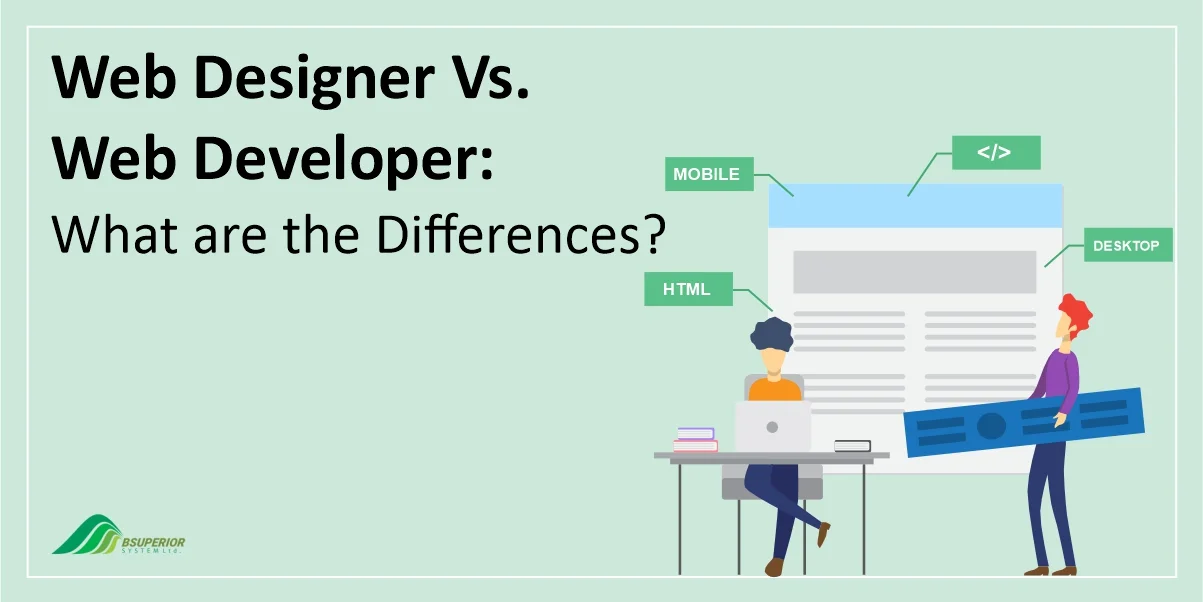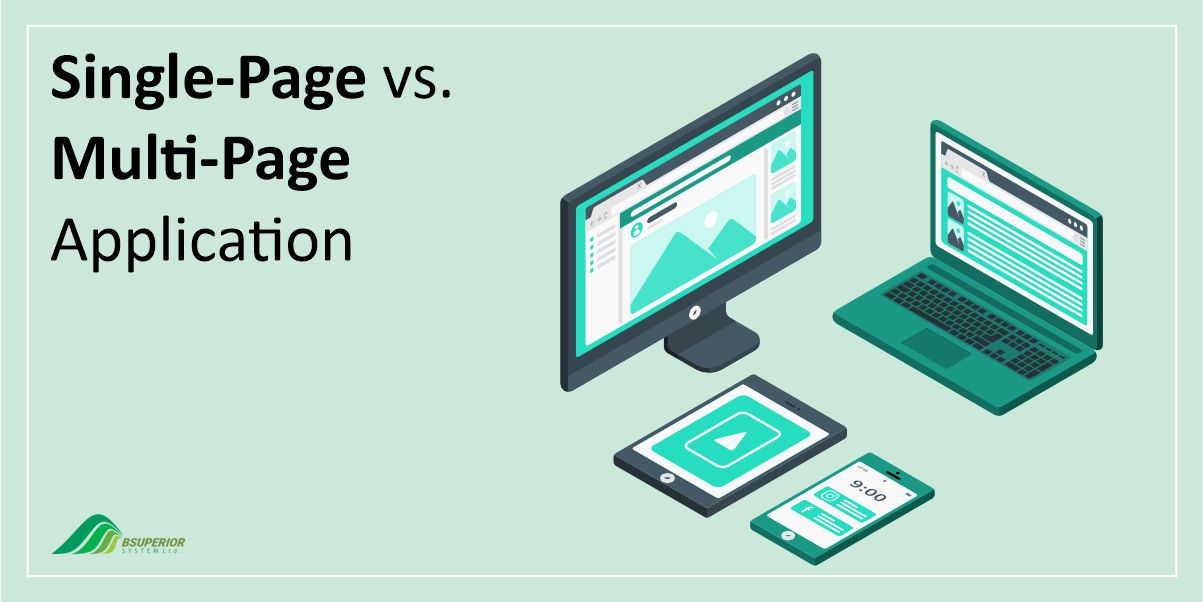Web Designer Vs. Web Developer: What are the Differences?

Table Of Content
The world of technology is replete with terms that are often not clearly defined, leading to numerous questions. One common point of confusion is the distinction between a web designer and a web developer. Many people use the terms “web developer” and “web designer” interchangeably, but this is a mistake!
The Difference Between Web Designer and Web Developer
First, I’m going to explain these terms with a very simple example.
Imagine you are in a car. In order to drive the car and use it, the engine has to work, right? It’s the most important part of the car that normally can’t be seen but we need it, obviously!
Web development is the engine! The user cannot see the work done by the developer, but without it, the website won’t work. Web design is the body of the car. Without a steering wheel, seats, and doors you can’t ride a car, even if the engine works properly. In fact, the engine needs the body, and the car’s body is useless without the engine.
It should be clearer to you now that there is a distinct difference between web design and web development, and that for a website to work, both are absolutely vital. With this general understanding of the relationship between web designing and web developing, we can now review them separately.
Read more: Best Web Application Development Companies Worldwide
Points of Comparison:
- Role: A web designer is like an architect, envisioning the look. A web developer is like the builder, making that vision come to life.
- Tools: Designers use graphic tools, developers use coding platforms.
- Focus: Designers emphasize visuals and user experience. Developers ensure functionality and performance.
- Outcome: A designer provides a visual blueprint. A developer turns that into a working website.
What Is Web Designing?
Web designers first imagine how the website will look like. They need to have an overall idea of what they are going to create. To do so, they need to know what the purpose of the website is. Then they need to know who the audience is or who the end users are, in order to tailor it to their needs. Having considered these issues, they can come up with the basic concept of the website and develop an outline.
The next step is when the designer starts using professional design programs such as Sketch or Adobe XD. The designer should know the fundamentals of graphic and visual design, such as color theory, composition, typography, etc. Understanding these basics ensures that the designs are both appealing and effective in conveying the intended message. The designer also needs to pay attention to detail because even small inconsistencies can disrupt the user experience. Having creative skills is crucial for bringing unique and fresh ideas to the table. Good problem-solving skills are essential to address design challenges and come up with solutions that cater to the user’s needs. And lastly, lots of patience is required because creating a design that meets both client expectations and user needs can be a time-consuming process.
After completing the primary design, the designer consults the web developer. We will mention what a web developer does later on. At this point, the developer highlights the parts that need revision. They discuss different issues; then, the designer makes the changes and finalizes the design. In the final stages of the website design, the designer must consider the following points to create a professional website:
- Website Coherency: A website should be coherent. Different parts should be related in a way that keeps users active and ensures they get the best result from their visit. A satisfied user is the most important goal of almost every website. When people have a good experience on a website, they will return and may even add the website to their bookmarks. They also might recommend the website to others. All of these points emphasize one thing: a good website design.
- Good Looks: As we said before, the more eye-catching the website is, the more users spend time on it. Web design services help make websites look their best. A web designer will choose the right colors, pictures, and layout. When they create a website, they make sure it’s inviting. A web developer then helps to make sure everything works well on the site. Together, they make sure the website design is both good-looking and easy to use on any device, like computers, tablets, or phones.
- Having Your Own Style: The designing style is of key importance. This personal touch not only helps in creating a website that stands out but also reflects the essence of branding. When users come across a site, they should feel the brand’s identity through its design. A strong blend of personal style and branding ensures that the website design remains memorable and effective.
Read more: Types of Web Applications that can be Built with Laravel Web Application Framework
UX Designer vs. Web Developer
UX, which stands for “User Experience,” is used for those designers who work in the domain that focuses on user attraction. These designers are experts in data analysis with the aim of improving user experience. In a nutshell, their job is to design the layouts in a way that keeps users interested in the website.
Points of Comparison:
- Role: A UX designer crafts the user journey on the website. A web developer builds the site to make that journey possible.
- Goal: UX designers want to make the site engaging and user-friendly. Web developers aim for functionality and performance.
- Expertise: While UX designers excel in understanding user behavior and needs, web developers are skilled in coding and web design and development.
- Outcome: A UX designer provides a blueprint of user interaction. A web developer turns this blueprint into a functioning website.
What does a web developer do?
Web developers make it possible for the concept and schemes designed by the web designers to be presented as a website on the internet. This is done via JavaScript, PHP, and other technologies.
There are two types of web developers: front-end and back-end.
Front-end developers work on the design of websites. They turn the design into code. These developers use different languages such as: JavaScript, CSS, and HTML. What these developers do is more related to designing, so people with a more creativity and artistic sense tend to work in this area. They create what people see on websites.
Back-end developers focus on the functionality of websites. They ensure that data is stored, processed, and accessed correctly. They use languages such as PHP, SQL, Python, and others. Users cannot see the work done by back-end developers because it’s all in servers and databases. The name back-end tells us everything.
By now, you should have a better understanding of a web developer’s tasks and its differences with what web designers do. So let’s have a quick review of these concepts.
Read more: Web Application Vs. Website
Web Design Vs. Web Development
- Web designers work on the appearance of the website. They use their art and creativity to design a website that is useful and user-friendly.
- Web designers work in either UX or UI areas or both.
- Web developers take everything that web designers have designed, and use programming languages to turn them into codes.
- Web developers work in either front-end or back-end areas or both.Front-end developers focus on the user interface and user experience,, and back-end developers manage data, server operations, and the underlying application logic.
In order to create a professional website, you need all these parts to fit together. You may learn all these skills and do them all by yourself, but it will take a lot of time. However, the best thing to do is to be an expert in one of the domains and let other professionals do the rest, in other words, to collaborate.
We value your input and believe this content may enhance our services. However, it's under review. If you see room for improvement, please use the "Report an issue" button below. Your feedback helps us excel.
Contact us today at –– and speak with our specialist.




